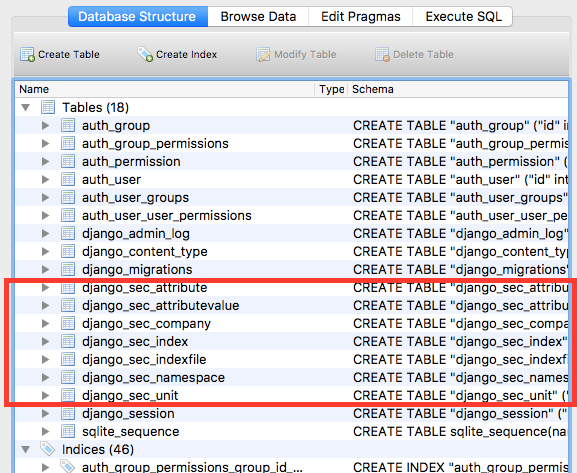EDGAR is the SEC documents registration system. This post is part of a series on the EDGAR data, how to acquire it, analyze it, and use it for greater powers. See the series index
In this post
- Explore EDGAR data structure and associated documents/attributes
- Develop strategy to sample data to home computer managable
- Acquire the data
Before the Start
EDGAR exports are large, like really big: 120GB for Q32017. We’re going to have to sample this dataset in order to explore it. Before we sample it, we need to take a look at it.
Django App - django_sec
I like using chrisspen’s django_sec fork of pysec because it bootstraps the process. You can acquire data pretty easily, explore the structure and relationships (what kind of attributes are available?), and basically just poke around.
Cautions
- EDGAR serves 429 form types; some of the data are in a nice XML derivative called XBRL.
- django_sec parses some of the data but has a lot of limitations we’ll update.
- EDGAR submissions are not vetted or reviewed by officials, so misformatting is probable.
Data Structure
- Companies are a central entity.
cikis the primary key. Companies can be downloaded from quarterly indexes and processed using django_sec. Can get forms/documents easily via cik. - Each company has 1+ submission. This is a bundle of documents associated with regulatory requirements for a given industry/company in a given quarter.
- Each document can be XBRL or subclassed XML. Each document can contain multiple records like a list of holdings (Form 13F-HR for institutional investors) or unaudited financial reportings for publicly traded companies (Form 10-Q)
- Each form will need a custom parser and data model developed. django_sec can only parse attributes from 10-Q and 10-K, we’ll be updating that later.

What to do: Install django_sec and import the company data. (This may take up to 10 hours)

The primary entities are company, index, and attribute. Company and index are populated by running python manage.py sec_import_index --start-year=2007 --end-year=2018.

The attributes table provides a lot of flexibility, at the cost of ease of calculations. As best I can tell, django-sec only populates around 50 fields from each company’s 10-K/Q forms (these fields were identified by a corporate accountant, so they’re likely a pretty good first approximation.)

What We’ve Got
- Starting point – a list of companies and their EDGAR submissions.
- Parsed accounting data for publicly traded companies
Problems We’re Facing
- Current processing limited (django-sec)
- Not all form types are being processed
- Not all fields from 10-K/Q processed
- No company demographic information
- Data not structured for analysis
- Entire dataset is still pretty big
Getting More Data
We’ve got a 5GB database of companies and an index of associated documents, 2007-2017. I want demographic data (available on the company profile page in EDGAR), and develop a schema made for analysis of the 10-Q filings.
I will continue this in Part 2 of Part II, once my company index download-and-process finishes. Make sure to leave plenty of time for data acquisition!